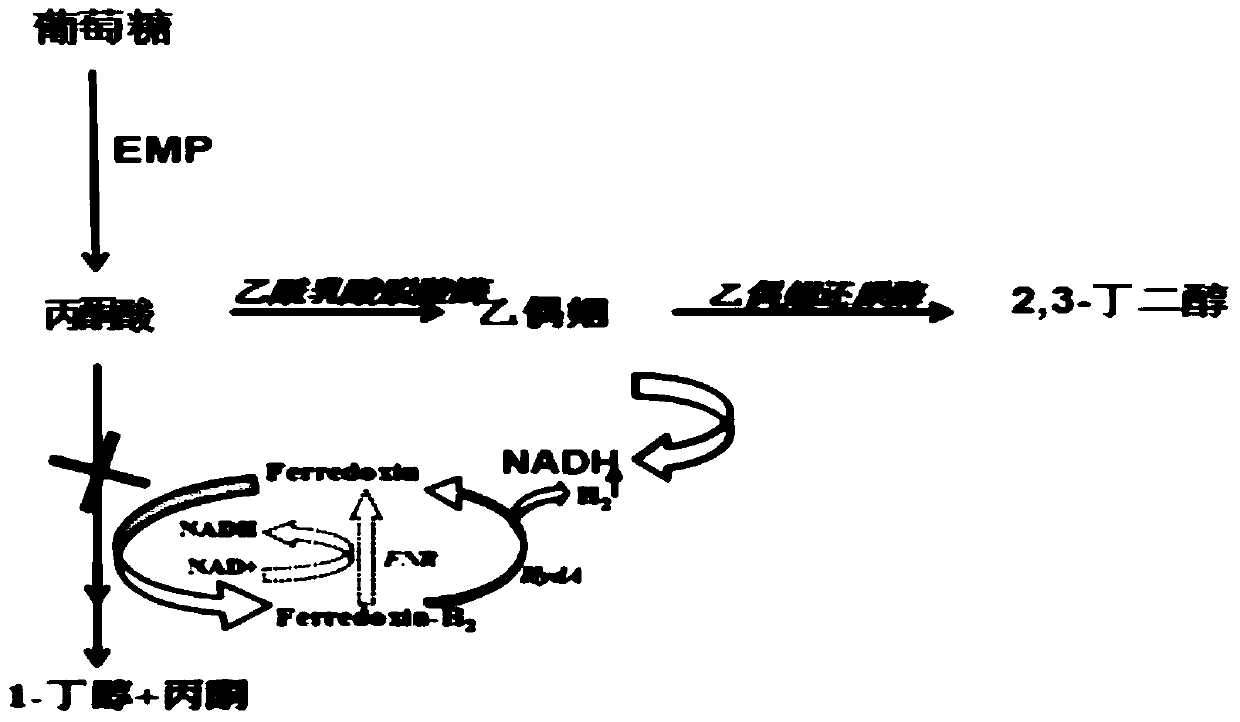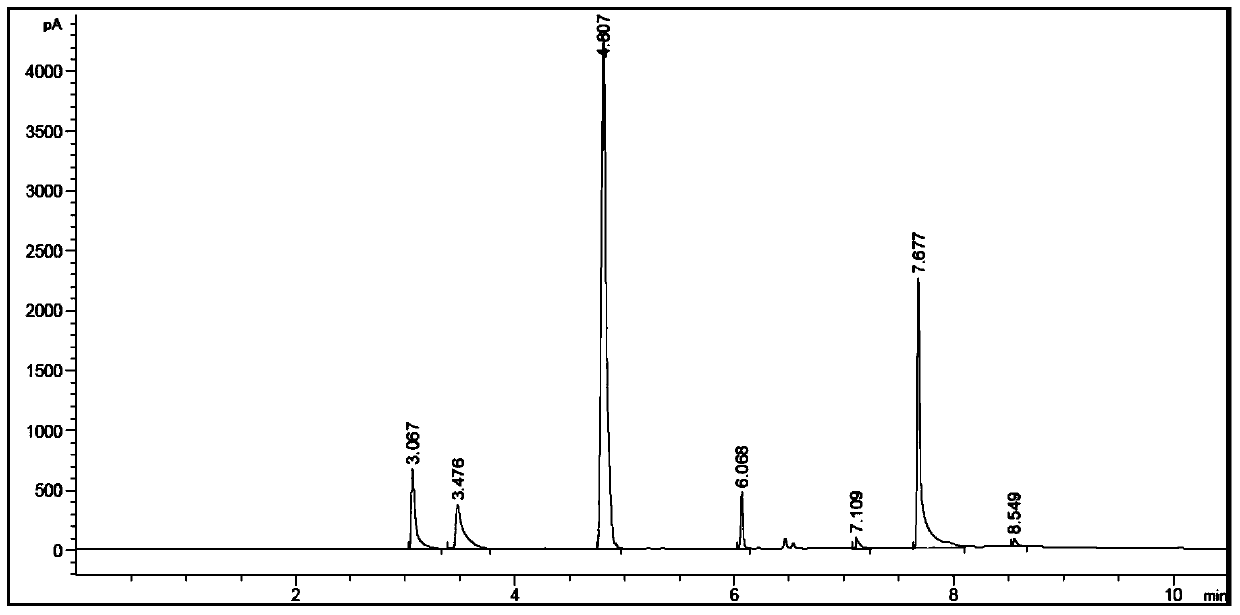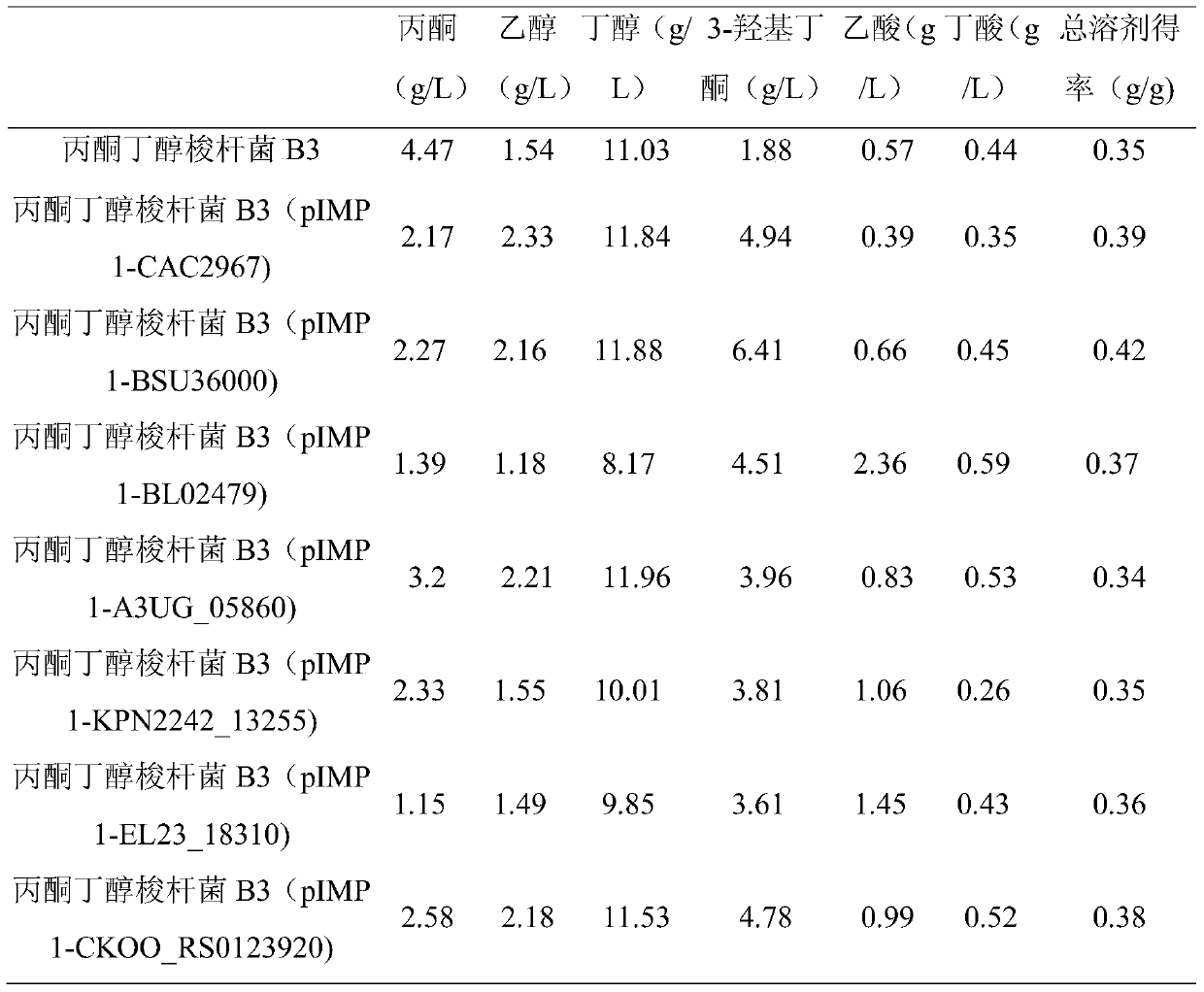Genetically engineered bacteria co-producing butanol and 2,3-butanediol and its construction method and application
A technology of genetically engineered bacteria and construction methods, applied in the field of genetically engineered bacteria co-producing butanol and 2,3-butanediol and its construction, can solve the problem of no increase in the production of 3-hydroxybutanone, and achieve improved product quality. Value, increase economic efficiency, increase the effect of product yield
- Summary
- Abstract
- Description
- Claims
- Application Information
AI Technical Summary
Problems solved by technology
Method used
Image
Examples
Embodiment 1
[0035] Example 1: Construction of Clostridium acetobutylicum containing expression plasmids of acetolactate decarboxylase genes CAC2967, BSU36000, BL02479, A3UG_05860, KPN2242-13255, EL23_18310 and CK00_RS0123920.
[0036] Table 1 Gene name and source of acetolactate decarboxylase
[0037] Acetolactate decarboxylase gene name source serial number CAC2967 C. acetobutylicum ATCC 824 SEQ ID NO: 1 BSU36000 B. Subtilis 168 SEQ ID NO: 2 BL02479 B. licheniformis ATCC14580 SEQ ID NO: 3 A3UG_05860 E. cloacae SDM SEQ ID NO: 4 KPN2242—13255 K. pneumoniae KCTC 2242 SEQ ID NO: 5 EL23_18310 P. polymyxa DSM 365 SEQ ID NO: 6 CK00_RS0123920 S. marcescens ATCC 14041 SEQ ID NO: 7
[0038] Genomic DNA of Clostridium acetobutylicum AT CC 824 in the middle and late stages of logarithmic growth was extracted with a bacterial genome kit, and its acetolactate decarboxylase gene CAC2967 was amplified by PCR with the followi...
Embodiment 2
[0056] Example 2: Construction of Clostridium acetobutylicum containing expression plasmids of acetoin reductase BSU06240, Cbei_1464, KPN_02061, CAETHG_0385.
[0057] Table 3 Acetoin reductase gene name and its source
[0058]
[0059] Bacillus subtilis B.Subtilis 168 and Clostridium beijerinckii (Clostridium beijerinckii) NCIMB 8052 were extracted by bacterial genome kit. The acetoin reductase genes BSU06240 and Cbei_1464 were amplified by PCR with the following primers:
[0060] BSU06240-s (SEQ ID NO: 16): AAAAGGGAGTGTCGA CATATG AAGGCAGCAAGATG (the underlined part is the NdeI recognition site);
[0061] BSU06240-as (SEQ ID NO: 17): GTACTGAGAGTGCAC CATATG TTAGTTAGGTACAAGGA (the underlined part is the NdeI recognition site). The amplified product was constructed according to the one-step cloning method in Example 1 to obtain vector pIMP1-BSU06240. After sequencing, its sequence is determined as shown in SEQ ID No:8.
[0062] Cbei_1464-s (SEQ ID NO: 18): AAAAGGGAGTGT...
Embodiment 3
[0068] Example 3: Construction of Clostridium acetobutylicum containing expression plasmids linking acetolactate decarboxylase gene BSU36000 and acetoin reductase BSU06240, Cbei_1464, KPN_02061, CAETHG_0385 respectively. In the above four gene sequences, the stop codon of the acetolactate decarboxylase gene BSU36000 was immediately followed by the start codon of the acetoin reductase BSU06240, Cbei_1464, KPN_02061, and CAETHG_0385.
[0069] Carry out PCR amplification with following primers and can make the gene fragment that acetolactate decarboxylase gene BSU36000 and acetoin reductase gene BSU06240, Cbei_1464, KPN_02061 and CAETHG_0385 connect:
[0070] BSU36000BSU06240-s (SEQ ID NO: 20): AAAAGGGAGTGTCGA CATATG AAACGAGAAAGCAACATTC (the underlined part is the NdeI recognition site);
[0071] BSU36000BSU06240-as (SEQ ID NO: 21): TGCCATCTTGCTGCCTTCATTTATTCAGGGCTTCCTTCAG;
[0072] BSU06240-s (SEQ ID NO: 22): CTGAAGGAAGCCCTGAATAAATGAAGGCAGCAAGATG;
[0073] BSU06240-as (SEQ I...
PUM
| Property | Measurement | Unit |
|---|---|---|
| viscosity | aaaaa | aaaaa |
| boiling point | aaaaa | aaaaa |
| freezing point | aaaaa | aaaaa |
Abstract
Description
Claims
Application Information
 Login to View More
Login to View More - R&D
- Intellectual Property
- Life Sciences
- Materials
- Tech Scout
- Unparalleled Data Quality
- Higher Quality Content
- 60% Fewer Hallucinations
Browse by: Latest US Patents, China's latest patents, Technical Efficacy Thesaurus, Application Domain, Technology Topic, Popular Technical Reports.
© 2025 PatSnap. All rights reserved.Legal|Privacy policy|Modern Slavery Act Transparency Statement|Sitemap|About US| Contact US: help@patsnap.com



